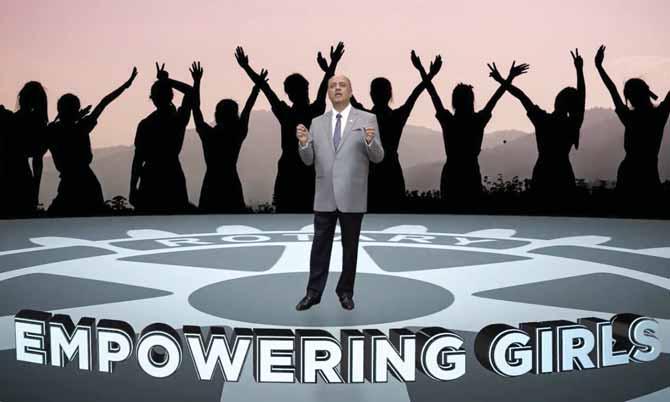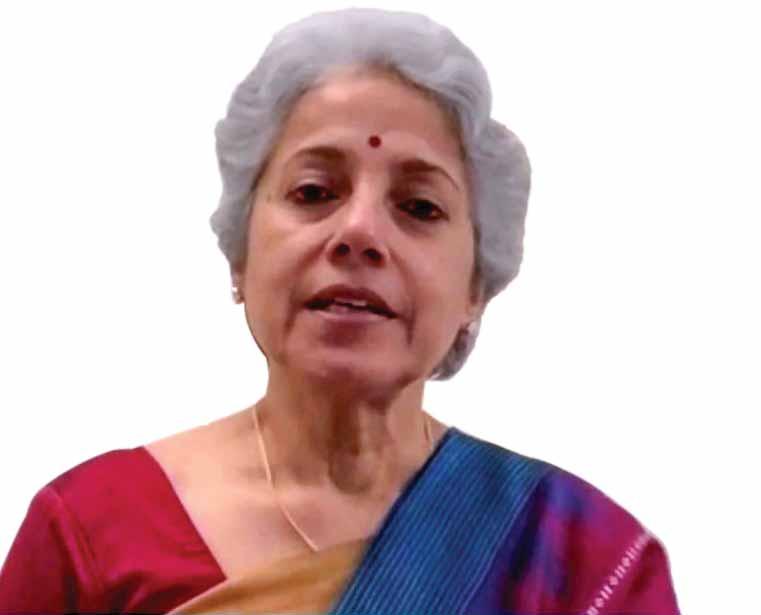
31 minute read
Of shikaras and heaven on earth
Wordsworld
Of shikaras and heaven on earth
Advertisement

Sandhya Rao
It’s not uncommon for novels to find voice on the big and small screens, but a TV serial becoming a novel? That’s surely unusual.
All these relations originate from these houseboats of ours. Don’t you see how many letters I receive? Letters come from far-off countries across the oceans, where I can never reach. Is there any corner of our own country where we don’t have acquaintances? All this is possible because of these houseboats, which your brothers want to sell.” This passionate and anguished voice belongs to Malla Khaliq, owner of three houseboats on Dal Lake in Srinagar, father of three grown sons and a daughter, belonging to the Hanji community of boating people in Kashmir. For generations his family has lived on water and this is where he sees his children’s future as well. But it is the 1990s and Kashmir is changing. And even though tourism is the bread and butter of this beautiful state’s economy, and houseboats its beating heart, even that is changing.
These sentiments expressed by Malla Khaliq synopsise the over 400-page-long novel by Pran Kishore called Gul, Gulshan, Gulfam, originally written in Kashmiri and translated into English by the wellknown poet, Shafi Shauq. And there hangs a tale that’s screaming to be shared. I had not heard of Shafi Shauq until I met him at the Frankfurt Book Fair in 2006 when India was invited to be the Guest of Honour. I was (and still am) ashamed of my ignorance because his is a very powerful voice in Kashmir’s contemporary literary history. As a poet, fiction writer, linguist and critic, he has written in Kashmiri, English, Urdu and Hindi. I had the opportunity to listen to him reciting his poetry in Frankfurt. One of the pamphlets distributed there carried this poem in English translation:


Crossing a street
Crossing a street, I lower my head in case of danger. Sometimes, it’s something’s absence I sense — nothing as tangible as rocket or gun. I must be careful. I cross the street, to find the house where I’d expected it to be not there. I look around in case I’m in a new neighbourhood. Easy to lose your way. It’s easy to lose your way at home, to cross the street and never look back. I lower my head instinctively to protect myself from what I can’t see.
One evening, soon after arriving in Frankfurt, Shafi Shauq was taking a walk by the river Main when he was accosted by an official-looking stranger who demanded to see his ‘documents’. Intimidated by his demeanour and unfamiliar with local practice, Shauq obliged. In a trice, the stranger made off with his wallet. By the time he could gather his wits and report the incident, Shauq’s bank account in Srinagar had been drained of all funds.
When I saw Shafi Shauq’s name as translator, I went online and discovered something Amit Chaudhuri had written in an Indian Express article dated December 2, 2019, entitled ‘The actual Shafi Shauq’: ‘Among those I met was a small, suited Kashmiri poet called Shafi Shauq. The term “Kashmiri poet” carried a mild voltage. I was speechless for an instant, then said, “Hello!” Not that a Kashmiri poet is an impossibility, but that Shafi Shauq represented a concatenation of impossibilities, to do with his presence here, with a resolution to the problem being found, and peace ever being regained. I wanted to study him closely and ask him for forgiveness. He was diffident, as non-Anglophone writers — especially poets — are. Kafka-like, he’d adopted the guise of normalcy — I mean his 20th-century appearance, the black suit, meant to sidestep attention. He was fair; his eyes shone gently. He had lost hair, like a Jewish intellectual.’ He went on, in the





article, to refer to the very same walletsnatching incident.
This is a digression, but it is a digression that connects; it shows how people are attached to each other in a myriad ways, how even a disconnection is a connection because there cannot be a split without a joining to begin with. I came to this novel late; my mother had read it at least a couple of years earlier, perhaps one of the last novels she read before she died. She had loved it; I could see it in the way her eyes shone when she returned the book to me. ‘Very nice,’ she said, adding that she loved reading about things she had known nothing about. ‘And the people are so real,’ she said. So true, I think as I read. Gul Gulshan Gulfam is that rare book that elaborates on the ordinary lives and relationships of ordinary people engaged simply in the business of eking out a living in the only way they know, in the only place they know. To those outside that milieu, this is exotica, but to the Hanji people, this is life, another ‘India’ even if ‘India’ itself is ‘other’ for them.
The extraordinary thing is that this novel was born as a television serial telecast on Doordarshan. In recent times, there have been occasions when films, particularly for children, have been written up as novels. But Gul Gulshan Gulfam is something else, it’s so big that it’s worth recounting the details from something that Pran Kishore himself wrote in an article appended to the book (and published online). The article is titled ‘The Dal formed an indelible imprint on my mind…’ Kishore was a well-known name in theatre circles but he nursed a desire to write a novel because he felt books had a greater impact. His first novel, Sheen Ta Vatapod, published in 1987, had received the Sahitya Akademi Award. He was all ready to write his second.
For this he recalled a time in the 1940s when he ‘rented a small boat at the rate of one rupee per day from the quay of my native place, Chinkral Mohalla, in the city of Srinagar. Taking my childhood friends along, I roved through the Maer Canal of the old city and reached Gagribal in the Dal Lake. It was during this journey that the Dal formed an indelible imprint on my mind and I took an interest in the dwellers of the Dal.’ A few years on, Pran Kishore had the happy fortune of meeting Haji Abdul Samad Kotroo who owned a chain of houseboats in the Dal. As Kishore writes, ‘My interactions with this exceptional human being and his family members inspired me to write about the lives of the boatmen of the lake who have been mingling the sweat of their toil with the waters of the lake for generations. Being a father figure, Kotroo Sahib was venerated by not only the boatmen but also the vegetable growers who dwelt in the marshes around the lake. He had continued the tradition that his father had set — of treating the tourists who would often come to escape the maddening city life to stay in his houseboat, as his own kith. Similarly, Malla Khaliq is conscientious of his duties of making his guests feel at home. This is how the seed of the novel Gul Gulshan Gulfam was sown in my mind…’
Whichever Kashmir comes to your mind, the Kashmir of Hindi films, honeymoons and photo ops, or the Kashmir of terrorism, militancy and separatism, it is nowhere near the whole story. Pran Kishore’s book gives readers a chance to peep into that inner world in which flesh and blood people lead strenuous lives enmeshed in a web of relationships and events in a region of incredible beauty that has been under tremendous political, social and economic pressure for uncountable numbers of years. He gets as close to the life breath of Kashmiris as he possibly can, eschewing along the way the many stereotypes and misconceptions, preconceived notions and historical aberrations that have come our way over the years.
But our story for this column is not yet done because here, now, filmmakers Sunil Mehta and Prem Kishen make their entry. In Kashmir to shoot their film Nai Shirvaani based on a Russian short story called ‘The Overcoat’, they heard Pran Kishore narrate to them the story of Gul Gulshan Gulfam, and promptly purchased its broadcasting rights. Before long, the serial was out and airing, its title song echoing in every Hindi-speaking home, with Parikshit Sahni heading a wonderful team of actors and Ved Rahi directing. Muskurati subha ki aur gungunati shaam ki, yeh kahani Gul ki hai, Gulshan ki hai, Gulfam ki apparently went on to win the Best Title Song Award from the Radio, Television Producers’ and Advertisers’ Association!
Shafi Shauq calls the novel the ‘quintessential mahaakaaviya (prose epic) of contemporary Kashmir. In following the lives of characters belonging to three successive generations of post-Independence Kashmir, and paying proportionate attention to the actions and moral






choices of each individual living under specific and sometimes limiting socio-economic and cultural conditions, Gul Gulshan Gulfam emerges as a novel at the cusp of Indian economic liberalisation and Kashmiri identity in flux.’
It’s a tremendously visual narrative, and we now understand why. There are no chapters in the book, only a tiny ink sketch of a shikara or boat, indicating pauses in the telling, thus reflecting the episodic nature of serials. You see how the weather impacts the tourist season, and how tourism is a mainstay. You see competition, exploitation, the pull of traditional practices and nuances of relationships. You see the Khalistan trouble in neighbouring Punjab reducing footfalls into Kashmir. When Khaliq’s eldest grandson returns home from studying medicine in Jaipur, his decision to practice ‘on land’ as against on the lake, deals a body blow to his grandfather. ‘Nisar Ahmed is going to leave this house today and live on land,’ he cries to his childhood friend, Narayan Joo. When the latter urges him to understand that times have changed, Khaliq says, ‘It is easy to lecture. But only the suffering person knows his pangs.’ And there’s suffering in large doses, as also happy events such as births and marriages. There are wonderful descriptions of Srinagar: the majestic Zabarwan mountains rising above the Dal lake, the different parts of the lake each with its own character, the network of houseboats and shikaras, the waterways, the Jhelum, the Mughal Gardens…
The words ‘If there be paradise (heaven) on earth, it is this, it is this, it is this’ generally ascribed to Hazrat Amir Khusrau are widely believed to describe Kashmir when in fact, they’re a comment on Delhi. Hard to believe, but this is what Rana Safvi tells us in her book Shahjahanabad: The Living City of Old Delhi. These words are inscribed in the Diwan-i-Khas at Red Fort: Agar Firdaus bar ru-ye zamin ast / Hamin ast-o hamin ast-o hamin ast. Yet, despite the heavy militarisation, there is little doubt that the beauty of the land and the people of this much maligned region will meet the expectations of this couplet. In the final analysis, that’s exactly what Gul Gulshan Gulfam does, despite the somewhat shoddy editing. For those more interested in the TV serial, do take a look at Rayan Naqash’s article, ‘Why tourists still look for ‘Gul Gulshan Gulfam’ when they visit the Dal lake in Srinagar’ in scroll.in. You must have guessed by now: these are the names of Malla Khaliq’s three houseboats. The columnist is a children’s writer and senior journalist.



Designed by Krishnapratheesh
RC Bhusawal Railcity, RID 3030, joined hands with the municipal council of Bhusawal to organise a cyclothon to promote and create awareness on cleanliness under the theme, ‘Green Bhusawal, pollution-free Bhusawal’.
Three rallies of 5, 10 and 20km were flagged off simultaneously. The event had 600 participants aged 4–70. They received a bag of goodies each which included a T-shirt, cap, mask, pen, diary, writing pad, keychain and a few other souvenirs.
At the end of the event, the rallyists gathered together to take an oath to keep Bhusawal clean and green.
A cyclothon to promote cleanliness in Bhusawal
Team Rotary News

RC Aadarsh Ahmedabad charters a club in Zambia
Jaishree

PDG Ravi Devalia and DG Lucie Kasanga with members of RC Chingola Metro.
Have you ever come across an Indian Rotary club sponsoring a club in a foreign country? Rotary Club of Aadarsh Ahmedabad, RID 3054, Gujarat, just did that by chartering RC Chingola Metro in Zambia, RID 9210.
“It all started when I was coordinating with PDG Ravi Devalia of RID 9210 for a medical mission in Zambia a few years back,” says Kapil Bhavsar, trainer for RC Aadarsh Ahmedabad. Subsequently he met Devalia in May 2019 while visiting his niece Chetna Avadekar in Chingola, a city in Zambia known for copper mining. Bhavsar was distressed to see the poor medical conditions prevailing there and floated an idea to his niece to put up a multi-specialty hospital to help the people, as well as start a Rotary club, promising all help from his own club. “She immediately got into the act.”
Devalia introduced Chetna to Musa Kasonka, a past president of RC Lusaka Maluba, RID 9210, and in July 2020 they went on a membership drive, says Bhavsar. Kasonka became the charter president and Chetna, the club secretary. In three weeks, they got 53 new members at the time of installation, “making it the fourth largest club in the district,” he says. RC Aadarsh Ahmedabad chartered the new club in October 2020. The momentum continued and the club now has 62 members — the third largest after RC Lilongwe with its 67 Rotarians.
Devalia is now working on membership retention. He is supporting the club in various ways to keep the members engaged and their interest in Rotary alive. The two clubs are planning to implement some joint service projects. Providing toilets in and around Chingola is a priority and Bhavsar has identified a manufacturer who has agreed to give pre- fabricated toilets for `19,000 each against the original cost of `26,000. “My club is coordinating with the African club to send the toilets. We will soon work out a plan to establish the hospital too,” he says.
DG Lucie Kasanga, RID 9210, is very happy with the club’s development. Bhavsar says: “When a community gains a Rotary club, it also gains a heart, and a group of caring men and women who come together to transform the area into a better place.”
Sewing machines distributed to underprivileged women
Team Rotary News
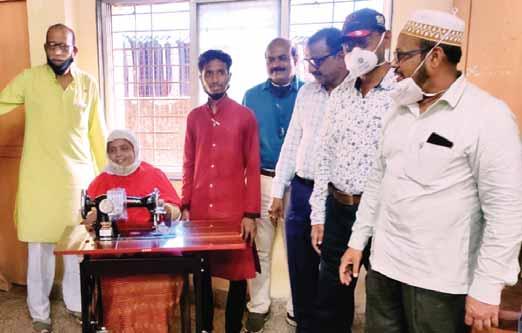
RC Burhanpur, RID 3040, helped 12 underprivileged women procure sewing machines on instalment basis with the aim to make them financially strong and self-sufficient. To get a machine under this project, the beneficiary had to make an initial payment of `1,250 and the balance would be collected as `370 a month. “Only if they pay for their machines the women will have a sense of ownership and dignity. Some of our club members pitched in for those who were not able to pay the initial instalment,” said club president Rizwan Abbas, adding that the club had also provided 10 sewing machines last month.
An online Rotary-CSR conclave
An online CSR conclave on water, sanitation and hygiene was hosted by EMGA Suresh Hari, and his team to provide an opportunity for Rotarians to interact with the RISAO staff and non-Rotary professionals. Trustee Gulam Vahanvaty gave the inaugural address on ‘TRF Connect’ and this was followed by a series of presentations by company officials including E R Ashok Kumar, president, Give India; Debraj S Roy, regional CSR head, Sony India; and Deepak Prabhu Matti, global head, employee volunteering programme, Cognizant.
PDG Ramesh Aggarwal, member, Area of Focus-Gift Initiative, TRF, crisply presented how Rotary is making a difference in the community through WASH. Rtn Pankaj Patel highligted Rotary’s partnership with Tata Technologies for a mega water harvesting project. “It was a successful global grant project achieved through meticulous planning and involvement of clubs in the zone,” he said.
Ravishankar Dakoju, past president, Rotary Bangalore Orchards, who has given the largest individual pledge to TRF till date gave a prerecorded video talk on why Rotary was his choice of giving. EMGA J B Kamdar, RRFCs John Daniel and Lakkaraju Satyanarain partnered with Hari to make it a successful webinar.
District Number
2981 2982 3000 3011 3012 3020 3030 3040 3053 3054 3060 3070 3080 3090 3100 3110 3120 3131 3132 3141 3142 3150 3160 3170 3181 3182 3190 3201 3202 3211 3212 3231 3232 3240 3250 3261 3262 3291
India Total
3220 Sri Lanka 3271 Pakistan 3272 Pakistan 3281 Bangladesh 3282 Bangladesh 3292 Nepal
South Asia Total World Total Annual Fund
37,517 22,591 23,575 29,310 10,706 121,690 18,221 3,180 9,733 70,285 38,125 16,978 42,053 20,593 43,392 14,003 1,055 77,290 13,759 293,949 147,612 34,912 10,075 12,232 25,453 34,793 45,356 35,511 26,887 6,827 13,691 (249) 17,160 60,420 9,179 13,668 23,710 14,837
1,440,078
69,460 6,206 39,367 119,573 45,434 114,934
1,835,051 58,398,648 PolioPlus Endowment Funds Other Funds
3,571 15,992 15,896 9,558 2,480 50,169 2,284 116 2,593 1,637 (186) 100 12,083 500 252 200 1,769 38,688 2,582 42,056 7,472 3,690 6,951 20,905 2,775 4,295 35,012 20,410 19,295 3,414 32,054 359 33,242 20,606 713 1,108 2,500 7,207
424,353
17,130 64,691 10,131 5,445 5,707 9,063
536,520 14,412,464
10,923 20,770 20 40,653 0 32,000 21,243 0 0 0 32,641 0 0 0 0 0 0 109,000 0 69,568 101 48,030 16 1,240 0 0 25,000 0 8,468 0 14 0 2,000 0 0 0 0 10,149
431,837
26,000 0 0 29,000 0 0
486,837 15,173,768 India
0 43,358 8,700 171,064 8,532 2,726 128,275 406 92,289 113,519 56,375 22,988 (19,761) (736) 4,224 0 (1,769) 332,264 963 726,090 (8,578) 34,212 0 121,401 7,050 7,265 112,074 159,362 20,272 121,870 108,733 7,356 361,364 43,955 93 2,833 0 51,550
2,840,320
15,015 246,533 1,168 150,549 7,770 188,061
3,449,416 15,315,772
Total Contributions EREY Donors (in numbers)
52,011 102,710 48,191 250,585 21,718 206,585 170,024 3,702 104,615 185,441 126,955 40,066 34,376 20,357 47,868 14,203 1,055 557,242 17,305 1,131,662 146,607 120,844 17,042 155,778 35,278 46,352 217,442 215,283 74,923 132,110 154,492 7,467 413,766 124,980 9,986 17,609 26,211 83,743
5,136,587
127,605 317,430 50,666 304,567 58,911 312,058
6,307,823 103,300,652
173 70 48 81 46 240 63 15 28 257 669 127 88 45 150 31 3 461 42 532 393 369 33 63 95 126 412 281 99 51 18 5 108 154 138 28 68 61
5,671
165 3 171 361 91
1,226 7,688 EREY %
3.5 2.3 0.9 2.2 1.3 5.9 1.2 0.7 1.0 4.2 15.3 4.0 2.7 2.0 6.7 0.8 0.1 9.0 1.3 10.0 12.3 11.1 1.3 1.1 2.8 4.1 8.2 5.0 1.8 1.1 0.4 0.1 1.9 5.1 3.7 1.1 1.9 1.7 3.8 8.7 0.2 10.2 5.1 2.2 24.8 4.5
Flying to Ever Ever Land?
Bharat and Shalan Savur
When you see Madhukar Talwalkar’s strapping, athletic physique and hear his strong, clear voice declare, ‘I’ve just completed 87 years of a wonderful life,’ you are absolutely floored. Then you watch him do calisthenics effortlessly and… you’re speechless. He is the founder of the popular gym Talwalkars. This renowned physical culturist walks his talk!
Never too old. “To change oneself is never too early and you’re never too old,” he says. “Please take care today. If you’re young, start today, you’re fortunate. If you are elderly, you’re still fortunate, start today. If you’re old, you’re still more fortunate, you’re wiser, start today,” he urges. “Just give years to fitness.” He exclaims, “what a disgrace it is for a man to grow old without ever seeing the beauty and strength his body is capable of! Today, I’m in the best of health. My body has never complained about anything, my knees have never troubled me, my lower back has never troubled me. My heart is at its best. I’m a man of abundance!”
He signs off with an inspirational and spirited, “Love your body! Take care of every centimetre of your body! Take care of your health, exercise,
What a disgrace it is for a
man to grow old without ever
seeing the beauty and strength
his body is capable of! food, sleep and your mind…Then nothing can trouble you.”
Fifty going on 25! For sure, these are exciting times. Things are changing faster than our pulse rate can cope. But don’t let that daunt you. As the gritty ditty goes:
Don’t let anyone steal your spirit,
Let it soar and fly on high.
Don’t let anyone slow your progress
As you stretch and touch the sky.
Dr Amir Hadanny from Israel’s Medical Centre tells us that while lifestyle improvements and exercise do help, the oxygen treatment they are working on is even more effective. Dr Hadanny and Dr Shai Efrati of the Tel Aviv University have found that administering oxygen at high pressure in a chamber for three months elongates telomeres (when they shorten, we age) in the body and actually makes cells 25 years younger. Put in numbers — a 50-year-old being able to gambol as a 25-year-old — it sounds marvellous, doesn’t it?
Light in dim eyes: Even more heartening is the great promise David Sinclair, professor of genetics at the Harvard Medical School, brings to the health table. Based on his team’s Milestone anti-ageing treatment, Sinclair and his team have restored eyesight in mice. “I’m excited about being able to rejuvenate tissues that fail due to ageing and disease, especially where there are no effective treatments, such as dementia… We hope to treat glaucoma in human patients in two years,” he says.
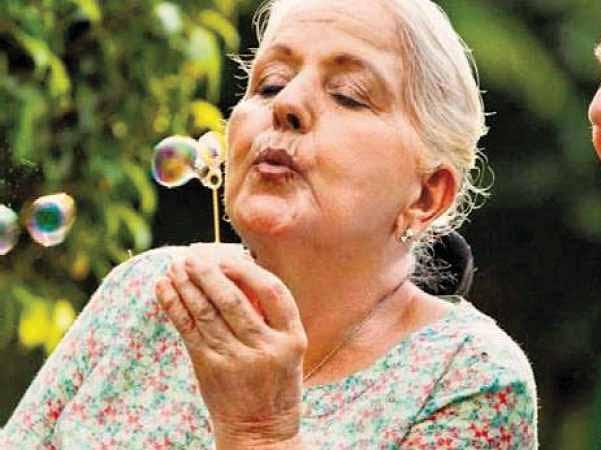
What exactly did they do? To cut a long story short, they injected OSK — a mix of three “youth-storing” proteins — into the retinal ganglion cells of mice which had optic nerve deterioration and the nerves re-grew “back towards the brain”: old cells transformed into young lively cells and dimmed eyes saw the light brightening their world.
Andrew Huberman is not involved directly with Sinclair’s research but has been observing it keenly. A neuroscientist at the Stanford University School of Medicine, he writes in Nature, “For decades it was argued that understanding normal neural developmental processes would one day lead to the tools to repair the aged or damaged brain… (this) work makes it clear: that era has now arrived.”
It takes me back to another era… when I found myself in a world I’d never seen before — a world blanketed in the silence of the snow in the valley of Kashmir. I disappeared into its white, vast land and when I returned to my senses, the silence inside stayed and… it sang! And it took my breath away. Youth and health are elixirs of the spirit, surging with the promise and power of unknown forces. Now, 50 years later, I feel that same sense of spirited hope, of a night cracking its shell and day breaking its gold over our horizon.
In his book The power of your mind, Dr Joseph Murphy writes about a gentleman coming up to him after his talk and saying, ‘I am 84 years of age. I operate every morning, visit patients in the afternoon, and I write for medical and other scientific journals in the evening.’ Dr Murphy observes, “His attitude was that he was as useful as he believed himself to be and as young as his thoughts. He said to me, ‘A person is as strong as he thinks he is, and as valuable as he thinks he is. If I should pass on tomorrow, I will find myself helping and curing people in the next dimension, not with a surgeon’s scalpel, but with mental and spiritual surgery.’ And Dr Murphy concludes, “This surgeon has not surrendered to advancing years. He knows that he is immortal.”
Breath of immortality: Are we already on the threshold of the next dimension the surgeon is talking about? Is the next dimension right here on earth? Are we not going to die? For genetic engineer Jose Luis Cordeiro and mathematician at the Cambridge University David Wood have written The Death of Death, their scientific take on immortality. They expect ageing to be reversed and death to be optional by 2045. “Humans will only die in accidents, never of natural causes or illness,” they say.
With nanotechnology, they hope to “print” in 3D the required body organs. It won’t be just about transplanting new organs, but also replacing unhealthy genes with healthy genes, dead cells with living ones, repairing damaged cells, using stem cells and so on. Within 10 years, cancer will be curable and so will other diseases, they state. And if we wonder if all this will be terrifically expensive, designed only for the super rich, Cordeiro and Wood have an answer even to that. Initially, it would be expensive, but with a competitive market, the price would gradually decrease because the demand would increase and benefit everyone. The two engineers expect all these anti-ageing, anti-dying treatments to cost as much as the latest smartphone!
The fact is: all kinds of buttons are being pushed in our smartminds as science rolls out earth-shaking cures and solutions, even immortality. Will our finer human sensitivities die in this technological advance or will it be more refined versions of ourselves? And yet, I can’t help but feel that our ancient yogis did find such miraculous cures in the herbs and purified air of the Himalayas. Will our myths of immortality dance with the truths of tomorrow? Meanwhile, OSK, the youth protein cocktail prances in our laboratories, a disease-free life awaits us around the corner and right in front of our eyes, we see the new becoming the norm. It’s like stepping into a time-tweaked programme. Weird, but wonderful.
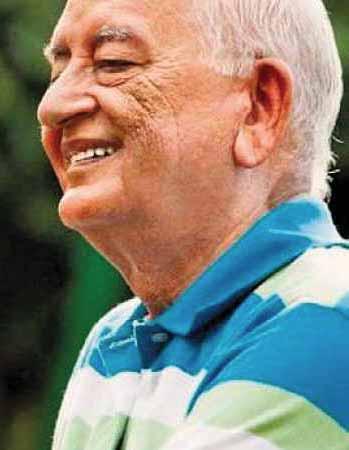
Within 10 years, all these anti-ageing, anti-dying treatments to cost as much as
the latest smartphone!
The writers are authors of Fitness for Life and Simply Spiritual – You Are Naturally Divine and teachers of the Fitness for Life programme.
RC Aduthurai – RID 2981 RC Dewas – RID 3040
A heart and lung screeing camp was held in association with a drug firm. Club president Manoharan coordinated the camp which benefitted over 300 people. ECG, BP, and other tests were done. Cataract surgeries were done on 62 elderly patients at a mega eye camp organised by the club.
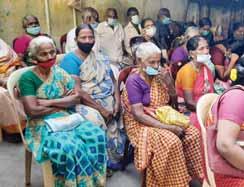


Tree plantation was done at a temple in
Veeradipatti village under the leadership of club president A Senthil. Club member V M S
Veerappan coordinated the project. On World AIDS Day, the club distributed protein powder to HIV positive children at the Civil Hospital, Gandhinagar.
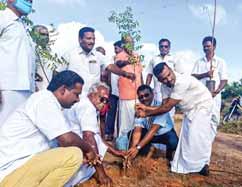
RC Delhi West – RID 3011 RC Tarapur – RID 3060
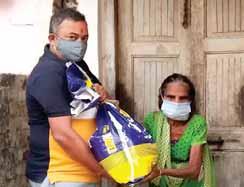
The club distributed medical consumables and fruits worth `2 lakh to Earth Saviours, a home for the abandoned run by Magsaysay Award winner
Ravi Kalra. Ration kits were distributed to needy with support from the Rama Krishna Mission and forest department officials.
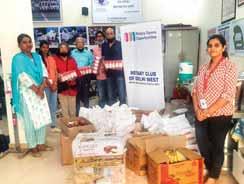

A washing machine was donated to a school for the visually- impaired girls. The members distributed snacks and juices to the students. UP Governor Anandi Ben Patel visited the club and interacted with the Rotarians. AG Sidharth Singhal presented her a lapel pin on RI theme. She invited the club members for an evening tea.
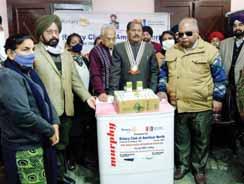
RC Roorkee – RID 3080 RC Kushinagar – RID 3120
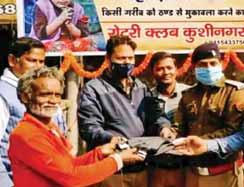
Polio Day was observed with
Rotarians giving polio drops to immunise the children. A stall was set up by the club at the Gandhi Chowk, Kasia, to collect sparingly used warm clothes and distribute the same to needy families in the neighbourhood.
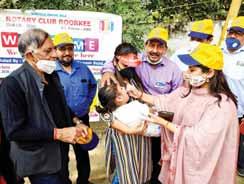

A blood donation camp was held to mark the martyrdom of Capt Navpal Singh and 75 units of blood was collected. Sub- divisional magistrate Subhash Kumar took part. Under Project Ek Nishchay (A resolve), the club, in partnership with S G Analytics, donated grocery kits to 8,000 migrant families in four months.

RC Barshi – RID 3132 RC Karkala – RID 3182
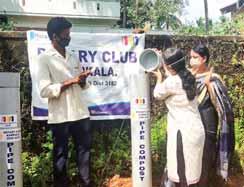
The club conducted assemblies in various schools for students of Classes 9–10. The Rotarians engaged the students on Rotary values and different projects are being planned in these schools. The club joined hands with the Karkala municipality to set up a pipe composting. Club president Rekha Upadhyaya created awareness on converting household waste into organic manure.

RC Ambernath East – RID 3142 RC Bangalore Vidyapeeta – RID 3190
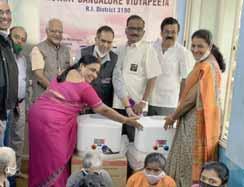
Daily essentials were distributed to 50 differently-abled people. Governor’s principal aide Sarjerao
Sawant was the chief guest at the event. Two electric geysers were donated to Nayachethana Trust that takes care of differently-abled persons. Club president Sandeep Nijagal coordinated the project.
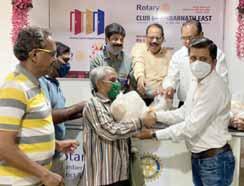
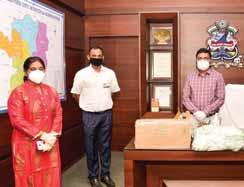

Essay and drawing competitions were held for high school students on the eve of Global Handwashing Day to create awareness on hygiene.
The contest drew good response. Club president Simon C K donated face masks and juice packs worth `1.5 lakh to the corporation commissioner S K Jatavath.
RC Rajapalayam – RID 3212 RC Raigad Steel City – RID 3261
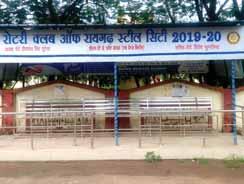
A digital classroom worth `1.15 lakh was donated to a government school to enhance classroom education. A passenger waiting room worth `1 lakh was constructed near the Government Paluram Dhanania College for the convenience of residents. Dr Satish Agarwal played a key role in this project.
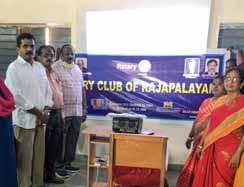
The club donated tricycles and crutches at the SIHR &
LC Hospital,
Karigiri, near Katpadi. A Rotary clock tower with a traffic post costing `10 lakh was built in the heart of the town at Station Square.
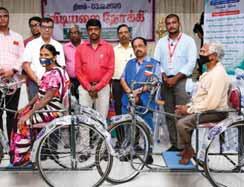
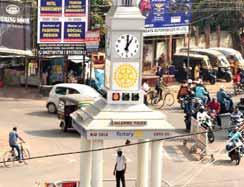
RC Alandur – RID 3232 RC Belur – RID 3291
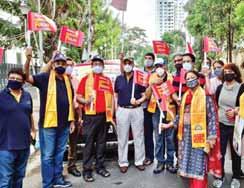
A two-day RYLA was organised for 55 Rotaractors at Javadhu hills in which leadership sessions and a forest walk were the major highlights. A polio awareness car rally was held in the presence of councillor Susmita Bhattacharya, DG Sudip Mukherjee and PDG Ravi Sehgal.
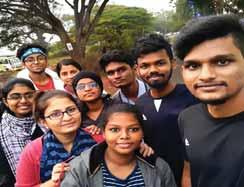
A nostalgic trip to my alma mater
TCA Srinivasa Raghavan
Last month a small group of us decided to visit our old college in Delhi University, the academically venerable but very low profile Hindu College. It brought back some wonderful memories. As the name suggests, the college was started in 1899 as a nationalist college. The old college magazines contain a lot of material on the events of the time. The British frowned upon the college.
Our little group had joined the college and hostel in July 1967. Most of us were just 16 years old. Imagine, just 16! A few were all of 17. The oldest lot were just 21, finishing their MA degree, but they made up barely 15 per cent of the total. The freshers were ragged by the seniors for a month. Then on Aug 15 they were hosted to a grand dinner by them. Ragging was traumatic in the first week but you got used to it because it was never vicious. My best recollection of it is my having to follow a senior around at all times with an ashtray in my hand so that he could flick his cigarette ash into it. I was not allowed to speak but let off for class. The same senior also once took five freshers to a film. He paid for their tickets and sat in the row immediately behind them — and told them they had to look back at him throughout the film and then tell him the story over dinner. It was, for the most part, harmless fun.
Well, 1967 is 54 years ago and it was nice to see that in that time, other than some new buildings to accommodate new courses and more students, the college had not changed much. We wondered at the small classrooms that accommodated just 25 students. My class had started with 14 students in the first year and ended with 10 when we graduated three years later. The teaching was very cosy because if the classes were small, the tutorial groups were even smaller, 3–4 strong. Besides, most of the faculty lived on the campus and sometimes the tutorials were held in their drawing room over tea and samosas. It was all very civilised.
When you are 16 and have to live away from home along with 120 other boys, it changes you forever — mainly because you are always hungry. It’s not that the hostel food was insufficient. It was just that we were growing up lads and very active. Pocket money had to be conserved through the month,
The visit brought back some wonderful memories for all
of us — disappointments, successes, infatuations, follies, and, above all, friends who matter.
which left most of us hungry at all times because there were other things like films to spend on. And of course the new freedom meant we all smoked. A packet of 10 Charminar cigarettes cost 30 paise which meant `9 a month or a fourth of the total pocket money. Hunger was a natural corollary.
The hostel, however, now looks quite decrepit because the college is not allowed to increase fees. We used to have single rooms but now as many as four students are crammed into one room, and this was very sad to see. I hope the hostel is soon rebuilt along the lines of the new, modern girls’ hostel.
The high point of our lives in college was the sports ground. It is a huge, grassy rectangle of about five acres. It had the cricket pitch in the middle and the tennis courts on the side, which have now gone. Cricket was the focal point and still is. In the late 1960s the college team had four regular Ranji trophy and two Duleep trophy level players. It has produced three or four Test level players also since 1955. I tried to play for the college team but just wasn’t good enough!
Disappointments, successes, infatuations, follies, and, above all, friends who matter more than any of the other things college had to offer, the visit brought back some wonderful memories for all of us.
No one talked much. But the silence was eloquent.
RIPE Shekhar Mehta announces his theme Serve to change lives

